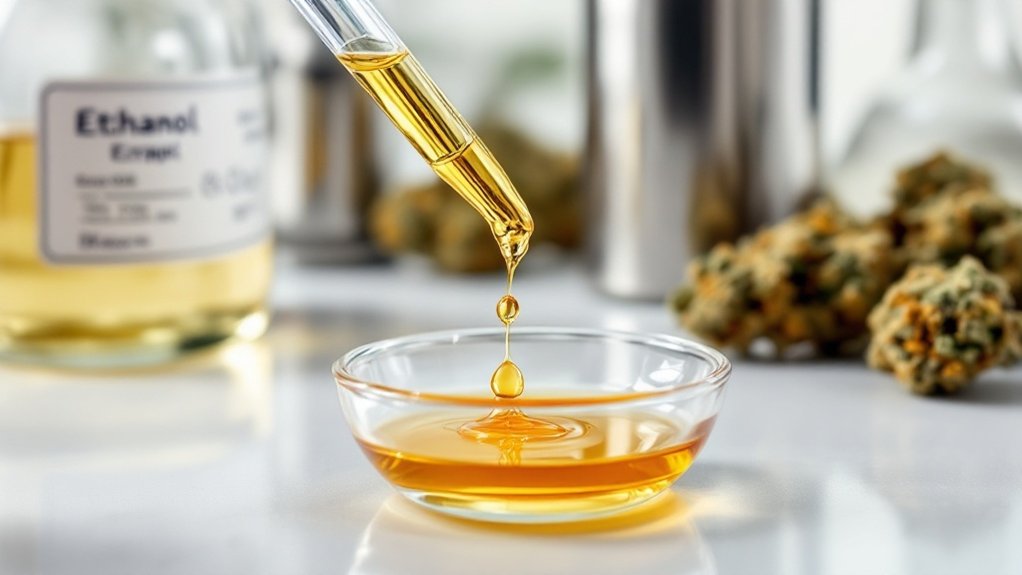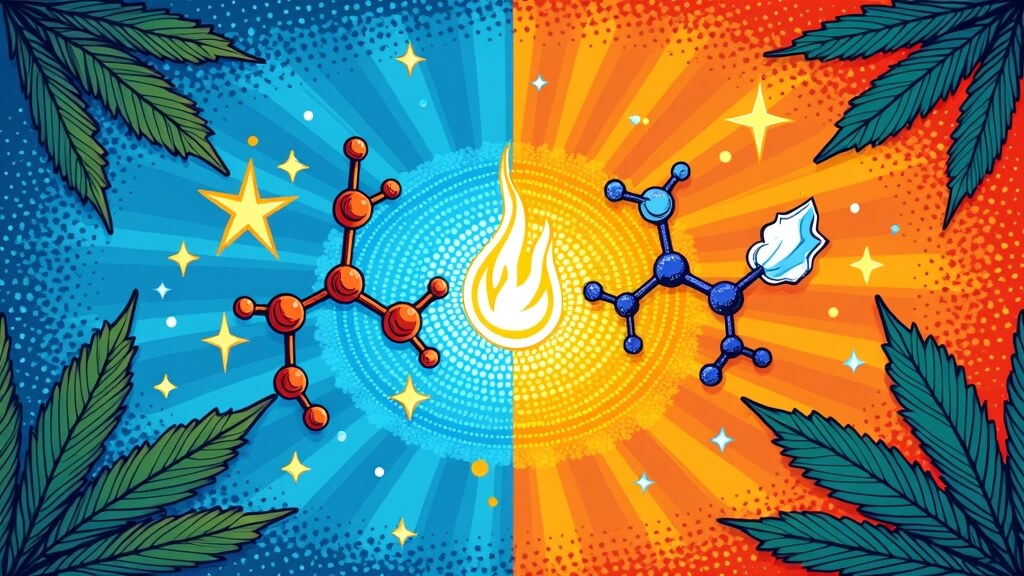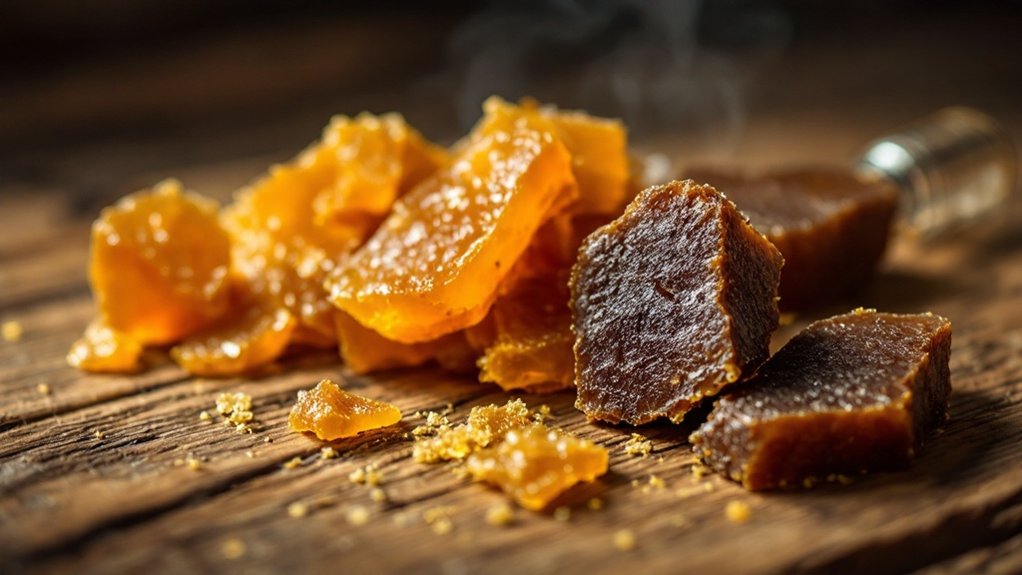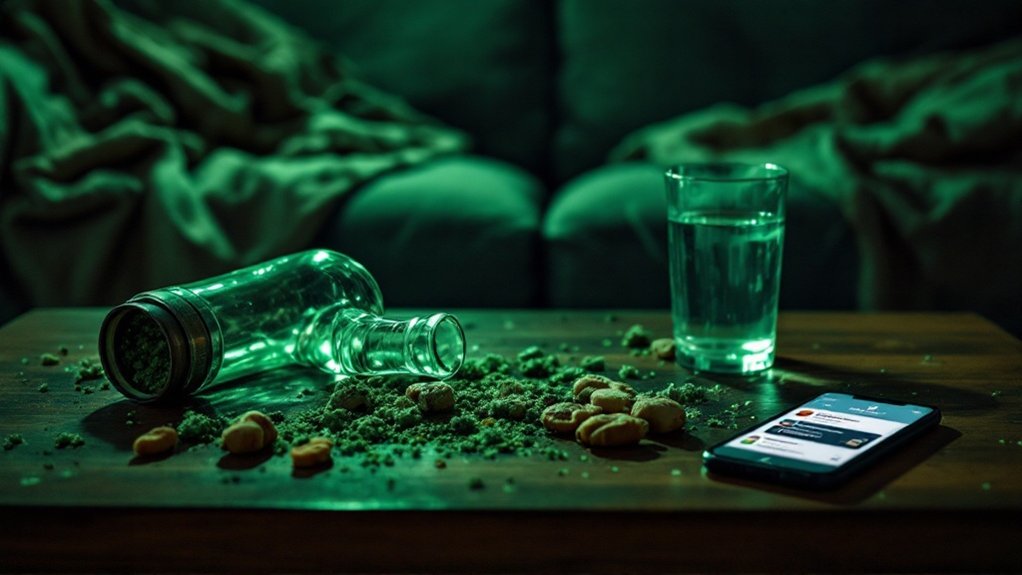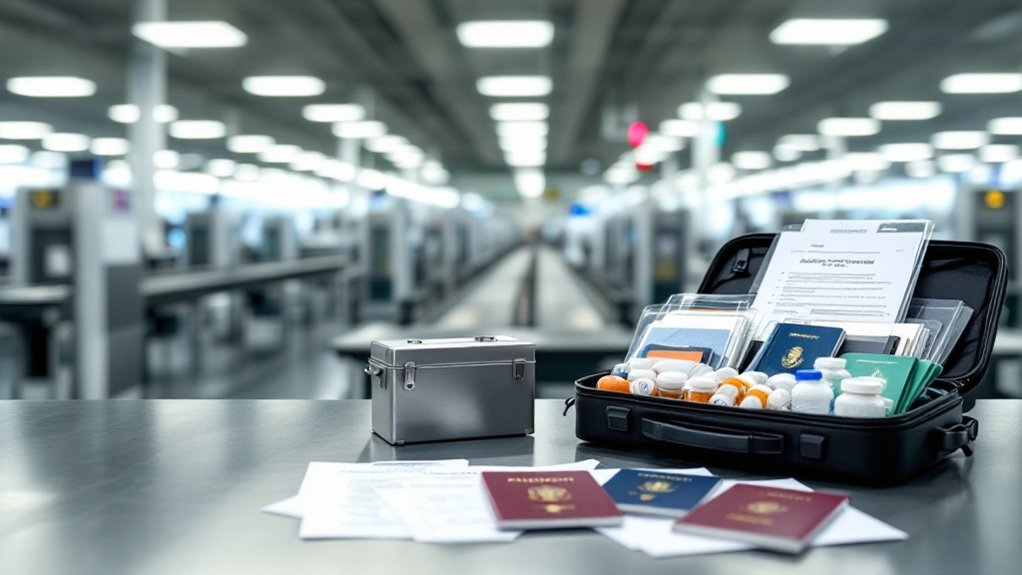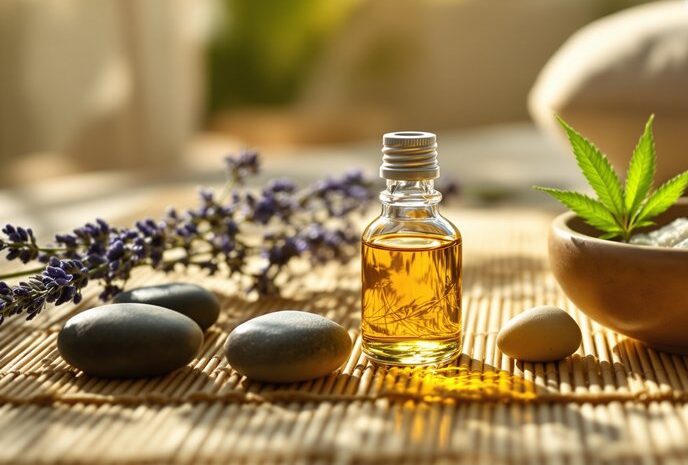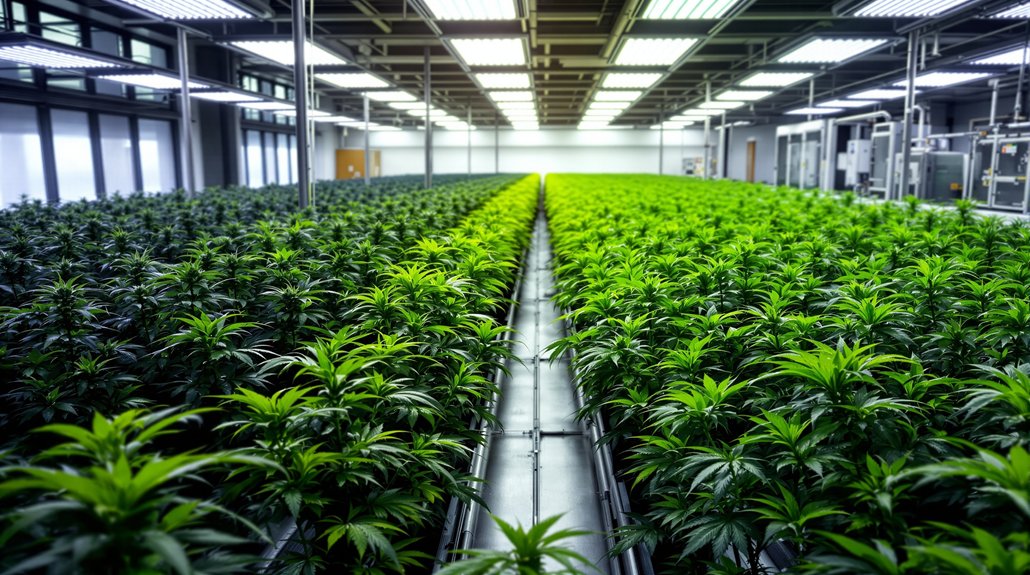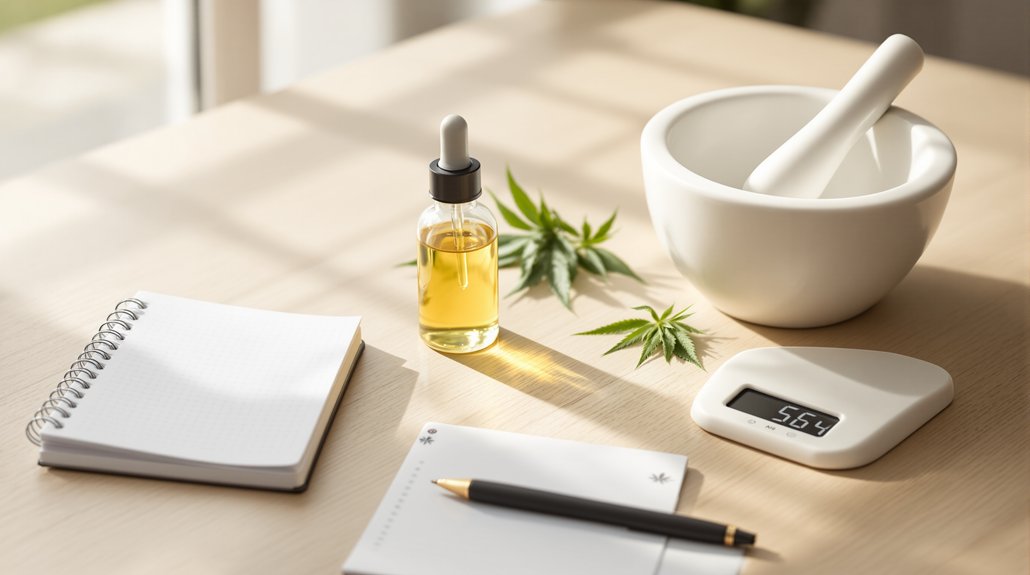Ethanol extraction strips THC and other cannabinoids from cannabis plants with remarkable efficiency. The process involves soaking plant material in alcohol in cold temps to keep chlorophyll at bay. It’s scalable, fast, and versatile. Sure, it’s flammable as hell, but manufacturers don’t seem to mind the risk. The method yields high-purity concentrates between 80-99%, making it industry standard. The balance of speed and quality explains why producers keep coming back for more.
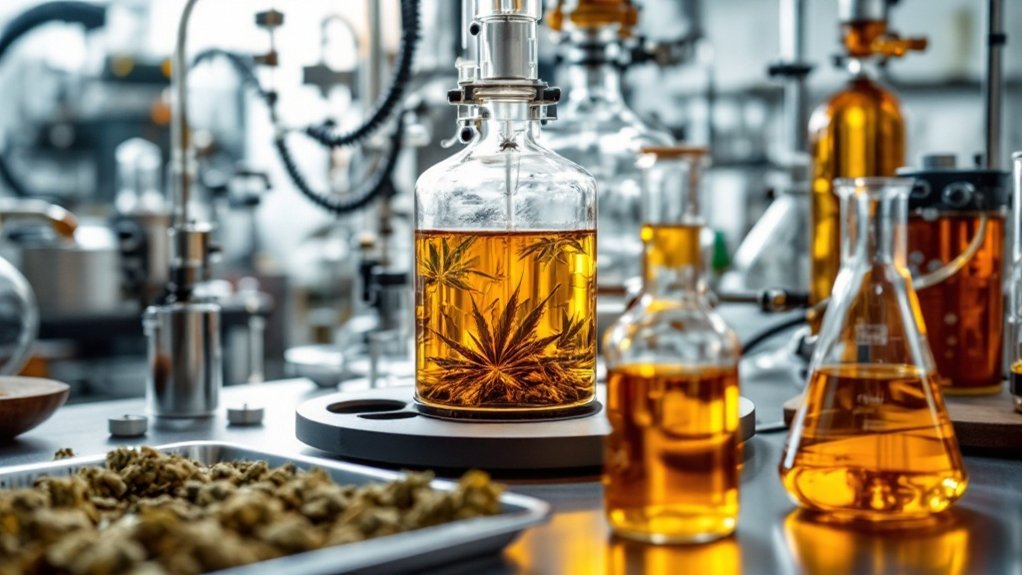
While cannabis enthusiasts debate the merits of various extraction methods, ethanol-based THC extraction has emerged as a powerhouse technique in the industry. This solvent-based approach separates cannabinoids and terpenes from plant material using ethanol’s unique polarity properties. Yeah, science. The method works because ethanol breaks down cell walls, pulling out the good stuff: THC, CBD, and those precious aromatic terpenes that make each strain unique.
The process is straightforward but requires precision. Raw cannabis gets soaked in ethanol – bagged or loose, doesn’t matter. The ethanol penetrates the plant material, dissolving cannabinoids and other compounds. After sufficient soaking (no, you can’t rush art), the plant matter is filtered out.
Temperature matters. A lot. Cold ethanol minimizes chlorophyll extraction, preventing your final product from tasting like you’re chewing on lawn clippings. This approach has gained popularity as it completely eliminates the need for winterization steps afterward. The Soxhlet technique offers an alternative method where boiling and condensing ethanol creates an efficient extraction cycle.
Post-extraction isn’t just a sit-back-and-relax situation. Winterization removes unwanted lipids and waxes. Then comes vacuum distillation or evaporation to remove the ethanol, leaving behind concentrated cannabinoid oil. The result? Products with 80-99% cannabinoid purity. Not too shabby.
Commercial operations love ethanol extraction for its scalability and relatively quick processing time. It’s versatile too, yielding everything from full-extract cannabis oil to tinctures and refined concentrates for vapes and edibles. The industry’s darling, for sure.
But it’s not all sunshine and rainbows. Ethanol’s polarity is a double-edged sword. It pulls out chlorophyll and plant pigments alongside the good stuff. More processing steps. More time. And let’s not forget, ethanol is flammable. Safety protocols aren’t optional.
Cost efficiency hinges on ethanol recovery through distillation. Without it, operations bleed money. And timing is everything – over-soak your material, and those delicate terpenes degrade faster than public opinion after a political scandal.
For manufacturers seeking versatility and scale, ethanol extraction delivers consistency when properly executed. That’s why it remains a cornerstone technique in cannabis processing today.
Frequently Asked Questions
What Safety Precautions Should I Take When Using Ethanol for Extraction?
Ethanol extraction requires serious precautions.
No ignition sources allowed. Proper ventilation is essential since vapors are heavier than air. Store in approved cabinets only. Spill control measures aren’t optional. Keep safety data sheets accessible 24/7.
Flammable at room temperature? Yeah, that’s a problem. Point-source ventilation removes harmful vapors. Protective gear prevents skin contact. Explosion-proof equipment isn’t overkill, it’s necessary.
These rules exist for a reason. Follow them.
Is Medical-Grade Ethanol Better Than Food-Grade for THC Extraction?
Medical-grade ethanol isn’t necessarily better than food-grade for THC extraction. Both work effectively.
The difference? Medical-grade (USP) follows stricter FDA guidelines and offers slightly higher purity at a higher price point. Food-grade (190-200 proof) extracts cannabinoids and terpenes just fine.
Some jurisdictions, like California, specifically require FCC-grade ethanol.
Bottom line: food-grade ethanol gets the job done without the premium cost. Fancy grades won’t magically improve your yields.
How Long Does Ethanol Extraction Typically Take From Start to Finish?
Ethanol extraction isn’t quick. The complete process typically takes 24-72 hours.
Cold extraction methods? Even longer. Temperature matters.
First comes soaking (4-24 hours), then separation, winterization (another 24-48 hours if done properly), and solvent recovery.
Batch size and equipment efficiency can dramatically alter timelines. Industrial operations move faster than small-batch processes.
Quality testing adds more time. No shortcuts here.
Can I Reuse Ethanol After Extraction?
Yes, ethanol can be reused after extraction. Producers routinely recycle it through distillation methods like rotary evaporators. Pretty economical move.
Quality degrades with each cycle though and contaminants can build up.
Most operations implement filtration systems to remove plant debris and waxes. Smart ones test purity regularly.
Cold ethanol (-20°C to -40°C) maintains better quality across reuse cycles. Eventually, you’ll need to mix in fresh ethanol.
What Equipment Yields the Most Efficient Ethanol THC Extraction?
For maximum efficiency in ethanol THC extraction, closed-loop systems take the crown.
These all-in-one workhorses combine extraction, filtration, and solvent recovery in a single unit.
Top performers like the Elara Extractor process up to 120 pounds per hour.
Serious operators get 95-98% ethanol recovery rates.
No manual transfers means less contamination risk.
Automated systems? Less labor costs.
Cold ethanol equipment specifically designed for cannabis does the heavy lifting.
